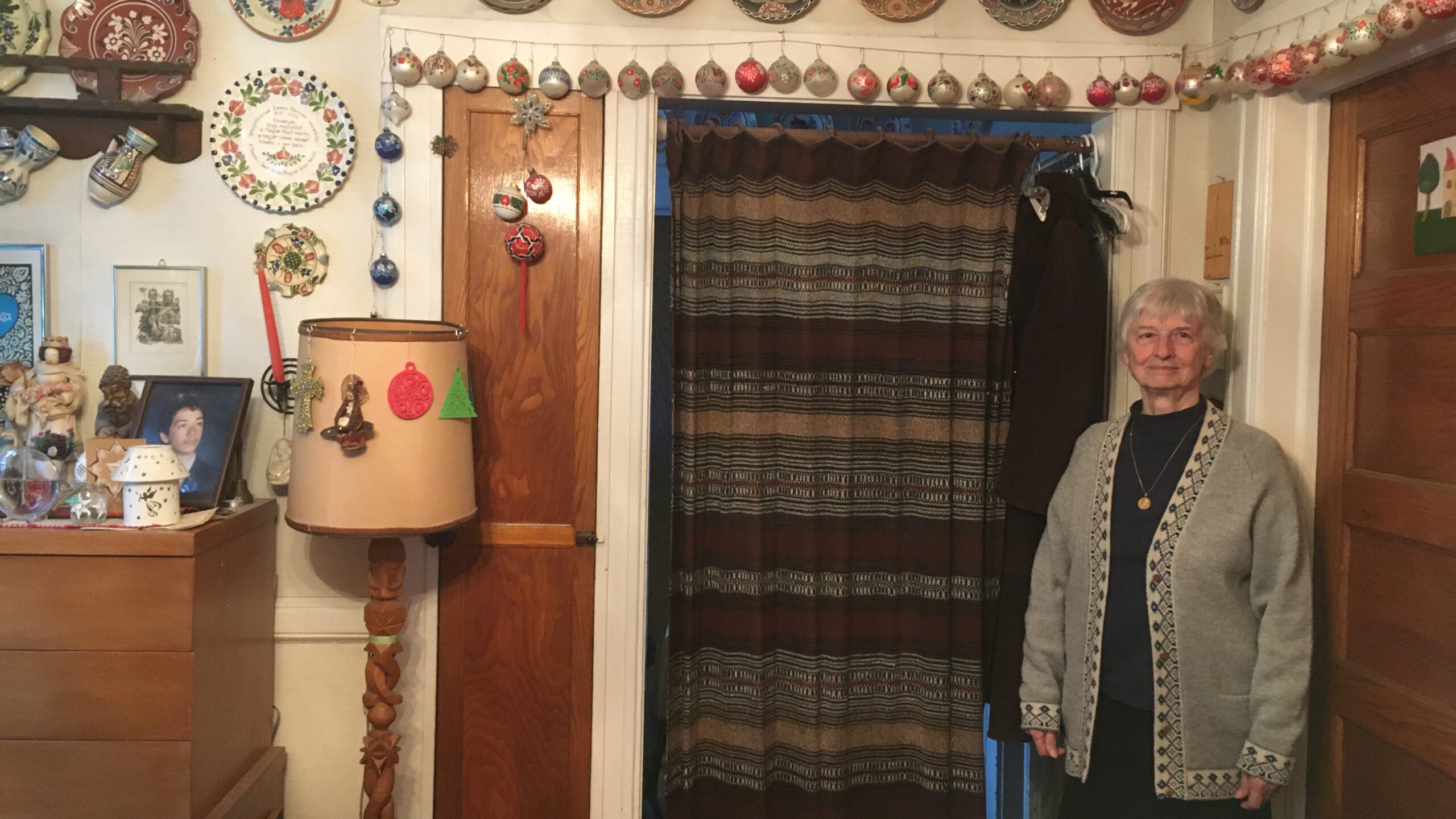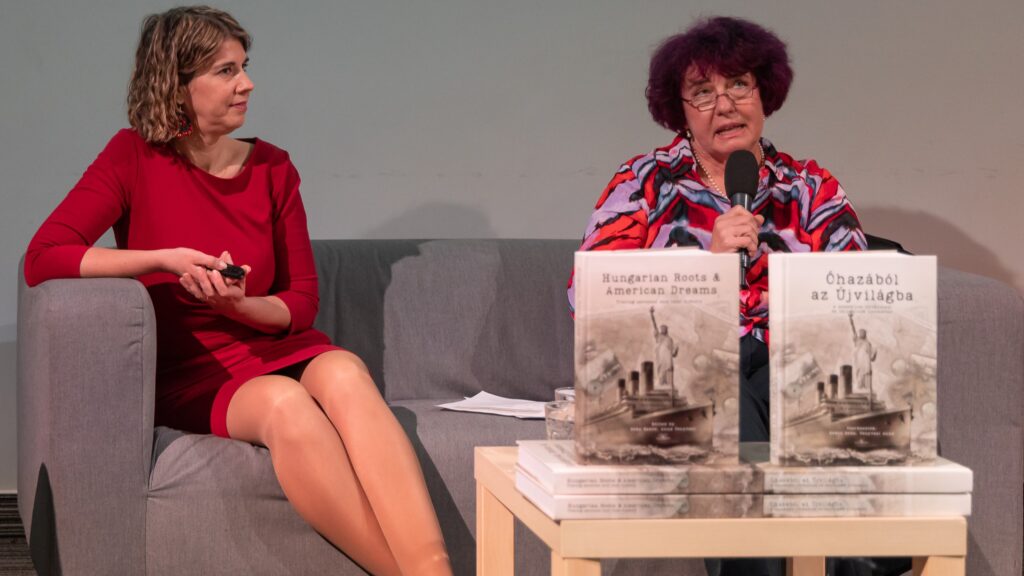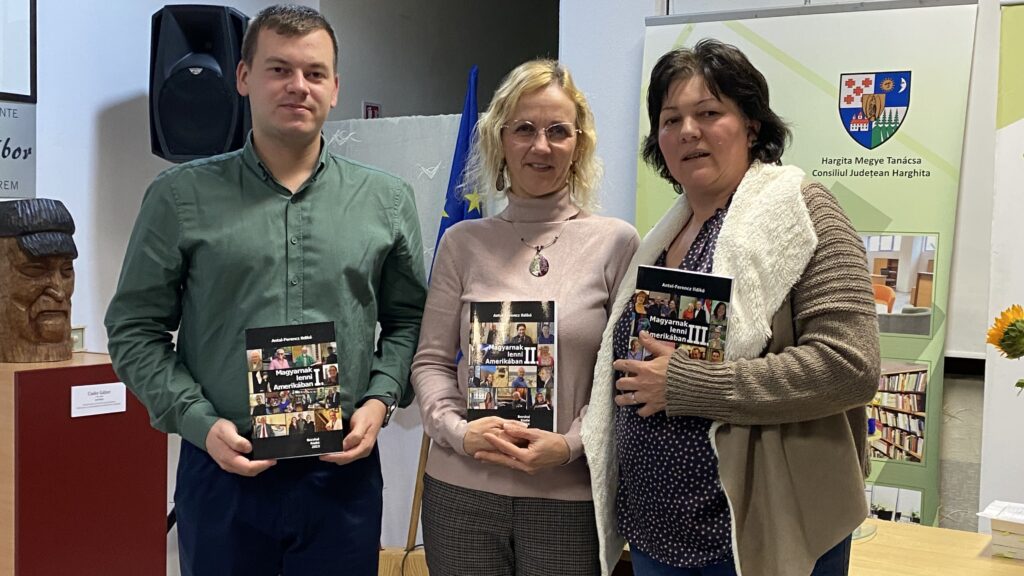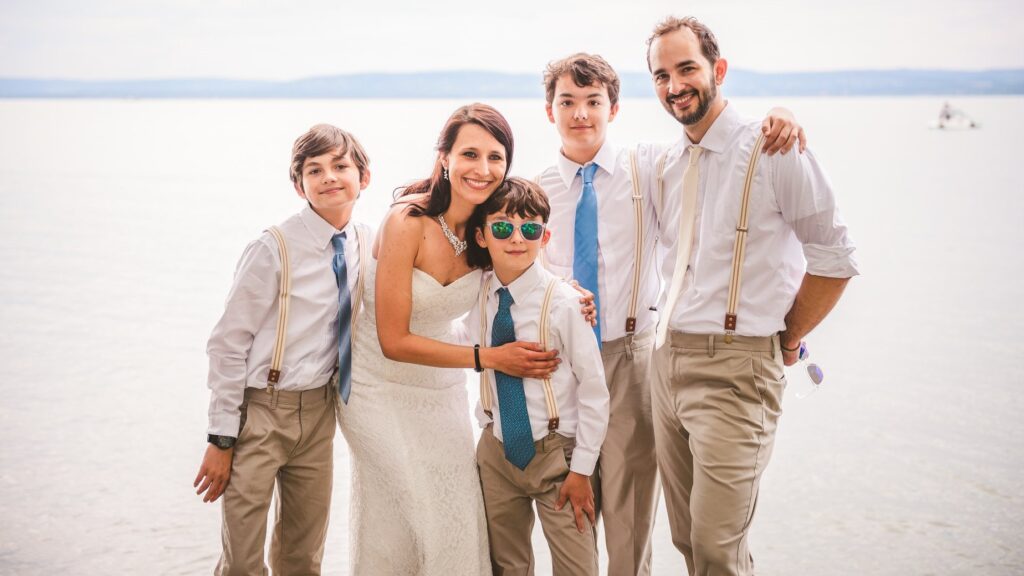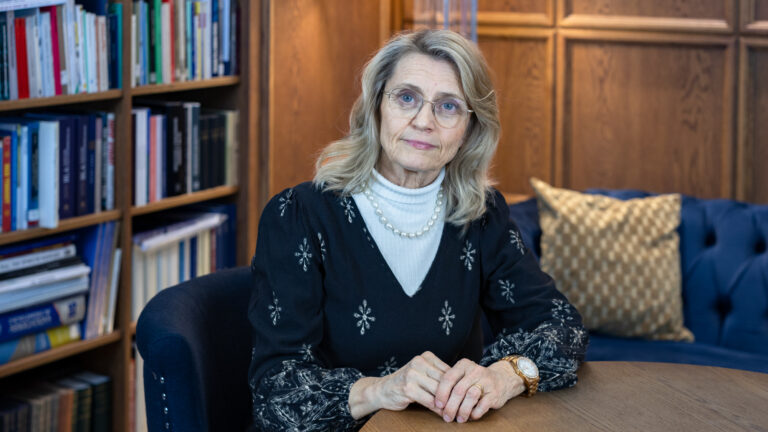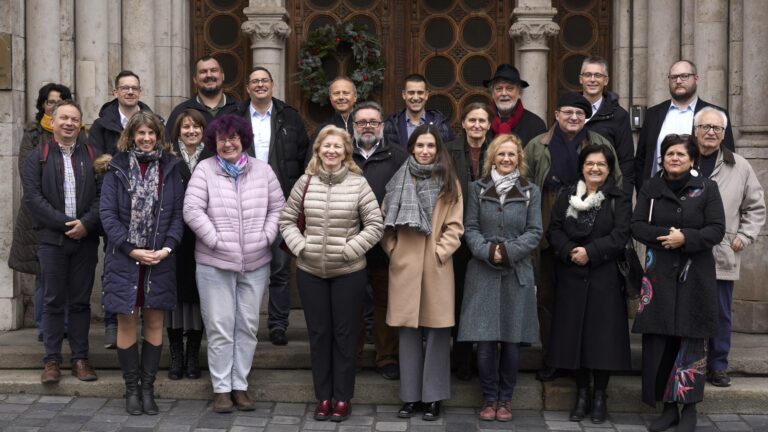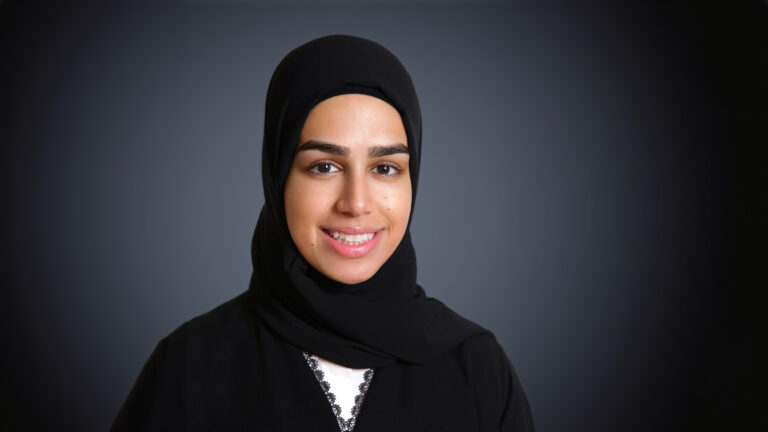This is an abridged version of the original interview first published on 777.hu.
‘From the moment I met her, when she invited me to teach at the Hungarian school she ran, Emese was for me one of the best and most enthusiastic of the many selfless workers of the Hungarian nation…She was able to recruit selfless and dedicated teachers to head the classes, to raise the necessary funds from nothing, was teaching herself, organizing, inspiring, serving as a role model for all, and fighting without stopping against the fatigue, pettiness, resignation,’ Hungarian fellow teacher and scout István Sándor, who passed away in 2019 and whom Emese always remembers with great respect and affection, wrote about her.
***
Emese Kerkay, née Maczky and her husband László Kerkay were both born in Hungary and have been living in America for over 50 years. They have been cultivators of the rich Hungarian historical and cultural heritage and overall active contributors to the life of the Hungarian community of Passaic, New Jersey, having served at the Hungarian school for over 30 years: Emese as teacher and principal, László as treasurer. Emese has also been an active scout since the age of six and was a founding member and for 25 years curator of the American Hungarian Museum of Passaic. Regardless of several changes during these decades, she’s been able to preserve, enrich and disseminate the treasures entrusted to or discovered by her, be they children (whom she affectionately used to call ‘little Hungarians’), knowledge, publications or events. She has also actively contributed to the preservation of Hungarian folk traditions by creating several artefacts herself: she has loved painting and carving eggs, embroidering Hungarian folk patterns, burning pictures on wood, and compiling countless cultural publications.
After long months of slowly getting to know her, attending a variety of events together and reading some of her publications, she finally trusted me enough to invite me to her home in Garfield, New Jersey, where we chatted among her beautifully decorated eggs, countless photo albums and books.
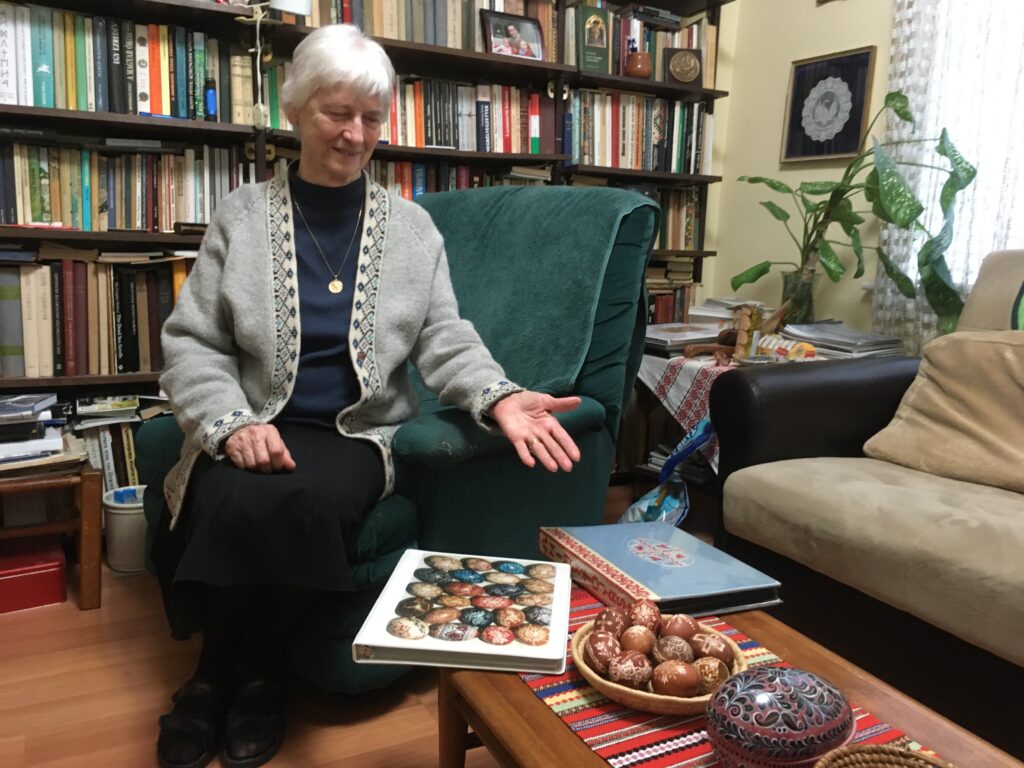
She started our conversation with her usual firmness, warning me that all she’s willing to talk about for publication is the work she had done and no details would be shared about her private life. By that time, I had already had an impression of the magnitude of her accomplishments from the books she’d lent me, but I knew very little about her private life. So I tried to persuade her to open up about the latter as well, since I was very much interested to learn where she got her extremely deep and creative affection of Hungarian identity and cultural heritage, her dedication and incredible work ethic, and last but not least the origins of the tremendous knowledge and experience she has passed on to hundreds of Hungarian families in hundreds of different ways. She wasn’t too talkative, but later I was able to map her private life a bit better from her collections and writings about her family lineage, which helped me put together a much more authentic portrait of her.
From Noble Ancestors to Stateless Émigrés
Emese’s latest research, following the history of the Kolossváry, Maczky and Fáy families, traces the origins of the ancient Transylvanian Ó-Tordai Mikola family back to Béla IV, King of Hungary in the mid-13th century. She inherited values and talents from her ancestors, including her deep commitment to her Hungarian identity, her love of the Hungarian language and culture as well as her dexterity. She believes that these aspects of character feature all the descendants of her great-grandfather, the Lajos Kossuth-loving postmaster of Heves. Her beloved grandmother was one of her role models, too. She has a treasure of knowledge and data collected about her parents and her siblings who live in four different countries (the U.S., Germany, Canada and Hungary) due to the tragic history of Hungary in the 20th century.
Emese’s grandmother, Anna Maczky (née Mikola) didn’t have an easy life. Not only did she experience poverty in the storms of Hungarian history after World War I but had to face her children’s tragic fate, too. Her son, Emil disappeared on the Eastern front at the River Don (today’s Russia) in 1943, while her other son György was beaten to death by the communists in 1945. Her beloved brothers suffered deportation by the Germans, and her husband died suddenly. She was deeply religious, and her strong faith helped her through life. In April 1945, she was evacuated to Germany with her daughter-in-law and first granddaughter, Emese, where she was tormented by a terrible homesickness. She was at rest only when, 16 months later, she moved back to Hungary with her daughter and son-in-law. She was an extraordinary woman, not only for the way she led her life, but also for the many talents she inherited from the Mikola family: she loved God, her country and family, she was fond of arts, especially music and poetry, and she was incredibly skillful and inventive overall. She wrote beautiful letters to her son and grandchildren in Germany. ‘Her letters reveal the soul of a woman of infinite intelligence and spirituality, who always included some kind of spiritual message in her letters: poems, stories, anecdotes, pictures, photos or postcards’, Emese explained.
Emese’s father, László, was Anna’s second son and a captain of the Hungarian Royal Gendarmerie (an elite unit of the Hungarian army) as well as a jurist and accountant, who became an American prisoner of war, and after being released, lived in Germany for the rest of his life. When his first child, Emese, was born, he was serving in Szolnok. In May 1941 he was transferred to Dés in Transylvania, and in 1943 was assigned to the Ministry of Internal Affairs in Budapest. His family survived the bombings of 1944 in the countryside. In December, the Ministry’s Gendarmerie Department was relocated to Szombathely to avoid being trapped in Budapest by the advancing Soviet forces. László had to leave the country, so he was separated from his family, whom he later met in Austria.
‘During the 24 years of his exile, he served the Hungarian cause in every minute of his free time until his last breath: he worked at several Hungarian organizations, supported all good Hungarian causes, gave lectures, even designed a portable hero’s monument, reorganized the Szent László Society, produced and published all alone a very successful quarterly magazine (GESTA), which was highly acclaimed by the Hungarian diaspora all around the world, and carried on a worldwide correspondence.’
With the help of his incredible memory, he hand-wrote multiple long ballads by János Arany by heart, creating the family’s first book in exile. He didn’t tell stories, but rather recited poems to his children, and in the last years of his life he wrote poems himself as well. Emese inherited the love of the beauty of the Hungarian language from him. His early death was the result of homesickness: his heart was literally broken. His wife, Erzsébet Kolossváry, survived him by nearly 47 years. In 1990 she moved in with her daughter Enikő but took care of herself until the age of 96. In her last five years, she was lovingly cared for by her three daughters.
‘God kept me, he had plans for me, and gave me parents and later children who helped me carry out those plans’
Emese was born in 1940, and arrived in Germany at the age of four, where she went to elementary school in a German convent in Altötting for four years, and then attended the Hungarian high school in Kastl, Germany for six years. ‘My training for Hungarian life began in December 1940 on the banks of the Tisza. The name I received from my parents is obligatory. I have tried to fulfil this obligation since my youth, both in Germany and here in the United States. We fled when I was only four years old, with a high fever and pneumonia. God kept me, he had plans for me, and gave me parents and later children who helped me carry out those plans.’ The 9–10-year-old girl had such a strong homesickness that while her parents were preparing to emigrate to Canada, she prayed secretly that they wouldn’t succeed. ‘My prayers were answered; they gave up their Canadian emigration plans after three failed attempts.’
Emese did eventually end up in the U.S., where she hadn’t wanted to go either, but where she believes God later led her: ‘If I had come here as a child and hadn’t attended the high school in Germany, for example, I wouldn’t have been able to fulfill my mission here. For me, the most important goal in the last 50 years has been the cultivation and spreading of Hungarian language, history and culture, especially folk art, egg painting and embroidery. For these, I had to be an adult.’
Before her marriage in Stuttgart in 1967 to László Kerkay, a 1956 refugee who had been living in the United States since 1958, Emese attended an interpreter school and worked as a translator and correspondent in Switzerland, Portugal and Germany. After their wedding, she came to America as a tourist, and six months later she received her permanent residency permit but never applied for American citizenship. After their wedding, she said goodbye to her father, not knowing that she would never see him again and that he would only know his first grandchild from a photograph.
From the Hungarian School to the Hungarian Museum
Upon her arrival in New Jersey, Emese immediately became involved in the vibrant Hungarian community of Passaic, taking on whatever tasks came her way naturally at the (by now) 120-year-old St. Stephen’s R.C. Magyar Church and the Hungarian Weekend School, the Hungarian Scout Troop in Garfield (founded in 1953) and the Hungarian American Museum (founded in 1981, closed in 2014). Garfield still has a particularly strong scouting presence, as Gábor Bodnár lived and worked there, establishing and directing with ‘anxious love and uncompromising determination’ the headquarters of the Hungarian Scout Association in Exteris (KMCSSZ in Hungarian). Emese, being a scout since the age of six, worked closely with him until his death in 1996.
Emese first became a Hungarian school teacher and then the principal from 1979 until 2006. The most important dates and events of these close to 30 years, and the nearly 70 years that preceded them in the life of the school, are recorded in the publication 99 Years in Hungarian written by her. Reading through the adventurous history of the Hungarian school, we learn that on 7 February 1914 the sisters of the Divine Charity Order started their work in Passaic at the request of Rev. Lajos Kovács pastor. Later, ‘despite all efforts, the second generation began to forget their mother tongue at an alarming rate. Half of the 640 families in the parish neglected their religious life and began to stay away from church’, but the nuns who were invited (back) by pastor Rev. János Gáspár took over the management of the school. The issue of Hungarian education faded again after World War II, and by the time the first wave of post-war immigrants arrived in the early 1950s, the Hungarian school in Passaic ceased to exist… However, after overcoming the initial difficulties, preservation of the Hungarian language, culture and traditions became important also for the ‘new Hungarians’. Since the post-war immigrants who were mostly highly educated also brought with them the knowledge and love of scouting, the weekend Hungarian school restarted mostly with scout leaders as teachers.
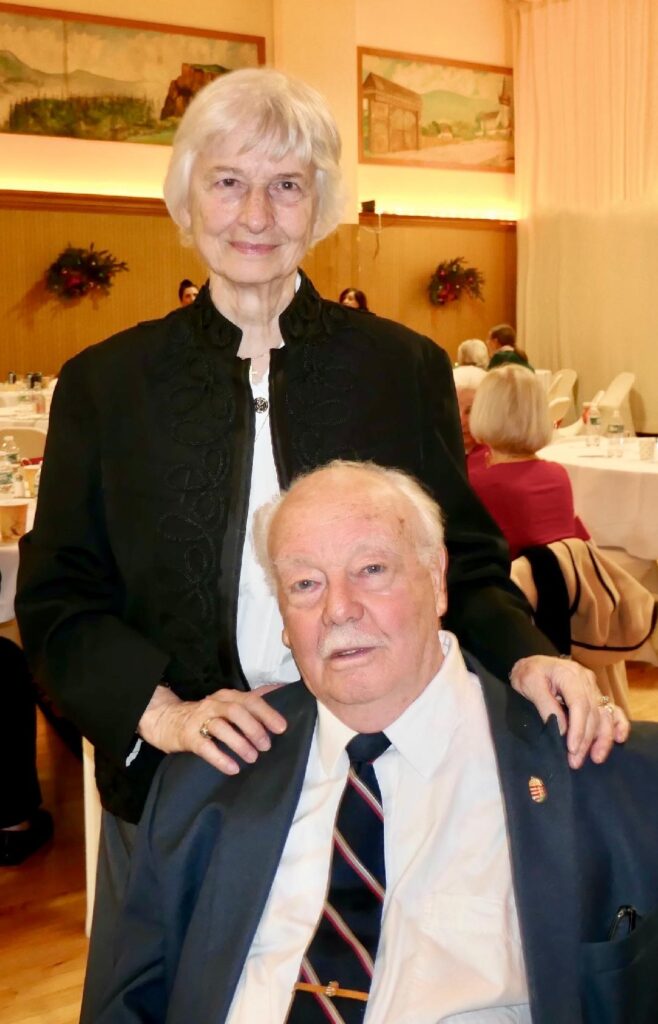
The new wave of refugees after the revolution and freedom fight of 1956 were first welcomed by the Reformed Hungarian Saturday School. The Catholic school had a more difficult start, but in 1958 Rev. János Gáspár managed to (re)open the St. Stephen’s parish’s Hungarian Weekend School, too. In 1965, thanks to Rev. Dr. Antal Dunay, daily Hungarian lessons started after the English classes for more than 100 children. The one-hour daily Hungarian class had excellent results. According to Emese, ‘by successfully overcoming financial and technical difficulties, this school could have been a model for other settlements, but none of the 16 Saturday schools existing at the time could implement Hungarian education daily. Despite the great opportunity, even Hungarians of Passaic had to be regularly encouraged to join…’
A new chapter in the history of Hungarian education started in 1974, when the reformed Rev. Zoltán Király founded the Weekend Hungarian School with his wife Zsuzsanna. In 1976, the Reformed and Catholic parishes jointly reorganized the Hungarian School, in which László became the treasurer and Emese a teacher. Since then, there has been Hungarian education continuously on each Saturday between 9 am and 1 pm, from kindergarten to school for 12–14-year-old students (back in Emese’s time, even up to 18 years when there was a demand for it). Originally, there was an English class for non-Hungarian speaking students, but it wasn’t successful, so it ceased to operate in 1988.
‘I consider it most important to deepen the love for Hungary’
Therefore, during the last 20 years of Emese’s administration, a prerequisite for schooling was speaking Hungarian. She was regularly criticized for this decision, but she has always believed that ‘results can only be achieved with children where the family wants the same. We can only build on a strong foundation. Decades of experience have shown us that we cannot teach Hungarian to children 3–4 hours a week who haven’t been taught at home. If we would switch to English for them, the purpose of the Hungarian school would cease to exist, and we might as well close our doors.’ Great emphasis was placed on the acquisition of the basics, like Hungarian speech, writing, reading, composition, grammar, history, literature, geography and ethnography, traditions, singing, and activities that were sometimes supplemented by crafts and even runic writing. ‘I consider it most important to deepen the love for Hungary. Since I always taught the older classes, I focused my attention on making my students proud of their heritage, stand up for Hungarians, defend our nation when attacked, correct misconceptions about Hungarians, the Hungarian language and our ancestors when they hear about them at school. They should write on Hungarian topics when they are allowed to do so, and they should present our history, culture, art and traditions to the world.’
Emese was a leading example in doing so: when Principal Zsuzsanna Király resigned in January 1979, she took over the management of the school. Officially parish priest Rev. Béla Török pastor was the principal until 1990, but Emese did all the school-related administration until the summer of 2006. In addition to her administrative tasks and her work as principal, she also taught regularly. In fact, for eight years she cleaned the school herself, then for two years with her daughter’s help; only after that did she involve the teachers and the parents, but half the time she was still left with this ‘noble task’ until someone finally took it over from her.
Teaching traditions have always been important in Hungarian schools in general, thus folk singing has constantly been taught everywhere; in Passaic it’s been an integral part of the curriculum from the very first moment, based on the inexhaustible treasure trove of Hungarian folk songs. Folk games, sayings, readings and storytelling were always part of the kindergarten curriculum, while older children learned many folk customs, wedding songs, folk ballads. Folk dancing was not left out of the curriculum either, if there was a suitable instructor; for nine years, Emese’s and László’s two children took the lead. The students were taught handicrafts (often by Emese herself), and at year-end there was an exhibition of their creations which were often used as gifts. Later a drawing competition was introduced, and an exhibition was also held at the end of the school year. Almost every year a nativity play, as well as caroling were performed at the Christmas celebrations. The students’ favorite activities were usually painting eggs and acting.
‘The guiding thread of my life is to spread Hungarian culture as widely as possible, and I prioritized that goal over everything else’
As a curator of the American Hungarian Museum, Emese organized exhibitions, wrote several brochures and publications about e.g. Easter, Christmas, embroidery, lace-making, Hungarian costumes, folk instruments, Trianon, 1956, and the Holy Crown. The exhibitions and programs included various contemporary artists’ work, such as painter Jenő Doby, engraver József Domján, pianist László Fornwald, photographer Béla Kása, woodcarver György Pándi. She also regularly held lectures, presentations and courses on Hungarian embroidery, folk costumes, and egg decoration, mainly for English-speaking audiences. Hungarian history always provided the framework for these sessions. ‘The guiding thread of my life is to spread Hungarian culture as widely as possible, and I prioritized that goal over everything else,’ she confessed. In 2014, the City of Passaic unexpectedly gave the museum a month of notice to pack up 25 years of work and put it in storage, where it’s kept partly until today. Founder Kálmán Magyar Sr. has been working ever since to transfer the collection somewhere else where it could be on display again.
In addition to her intellectual work, Emese’s hands ‘always had to be busy with something.’ She embroidered, knitted and drew since being in elementary school where this was a requirement at the time. When she was nine years old and had to spend the Easter break in the monastery, she received two eggs from his parents visiting her, carved by her father: one had the Hungarian coat of arms, the other the map of Hungary on it. From that moment, she became a devoted believer and enthusiastic ‘activist’ of egg painting. In 1971, she learned how to blow out eggs from folk artist Zsuzsanna Kormann (née Kokron) and lace designer and industrial artist Katalin Kristó-Nagy. They together were passing on their knowledge and experience by teaching the Hungarian scouts, Hungarian schoolchildren, and even foreigners about the secrets of Hungarian egg decorating for years. They had plenty of opportunities to practice and exhibit their work, because Hungarian Americans used to observe the Central European custom of Dousing Day (whereby men and boys visit women and girls, recite poems and then sprinkle them with perfume or water), unimaginable without decorated eggs. This was taken so seriously that girls and women competed with each other with decorating eggs, while boys and men wrote their own poems (which Emese even collected). When they discovered that only Ukrainian decorated eggs were widely known in the U.S., they began to advertise the Hungarian ones by exhibiting at museums, libraries, egg shows, and writing articles about the related customs. Emese even produced a 50-page booklet in English in which she explained the meaning of the ancient Hungarian word ‘hímes’, its religious origin and related folk traditions, drew 400 Hungarian egg patterns, and detailed some of the techniques for decorating eggs (e.g. scratched, written, engraved, etched, plant paper and metal applique painted eggs).
Devoted to Hungarian patterns, she has also painted them on tiles, wood, leather, fabric, and paper. She has also burned pictures and patterns on wood. In the Hungarian school, she has made a sample of every handicraft donating almost all her own creations and embroideries. She has also decorated eggs for sale. Her publications and writings are extremely diverse but are mostly focused on collecting and recording data and stories. Emese has been ‘collecting’ her ancestors and family stories for 45 years and wrote biographies of her famous relatives. She has created countless compilations, sometimes together with her students for the Hungarian School. In addition, she has put together an endless series of scouting memoirs, events and travelogues that proves her immense work and commitment to actively nurturing and spreading Hungarian culture.
Emese and László never miss any masses or events at the St. Stephen’s R.C. Magyar Church, but when asked about her deep faith, Emese just shrugs her shoulders: ‘Faith is so natural to me that I can’t talk about it.’ Therefore, it was also natural for her and for her husband to serve the local Hungarian church community throughout their lives. ‘This was “prescribed to me” by God. As István Sándor used to say, I shared my talents all my life,’ she added. Over the decades, they had to work with many Hungarian parish priests and always got along with them. Before saying goodbye to me, Emese recalls two of her fond memories with Rev. László Vas pastor, who passed away in 2018. Every year, Emese prepared 8–10 scratched eggs for the food blessing, which she gave away as presents afterwards. On his first Easter in Passaic in 2008, Rev. László Vas also received a decorated egg from her, as did all local pastors before him. ‘The blessing of food was at noon on Saturday. To my great surprise, the next day, on Easter Sunday, there was a small table in front of the altar, with the resurrected Christ on it as well as my blessed egg. No one has ever honored a decorated egg of mine like he did’, smiled Emese. When Emese and László celebrated their 50th wedding anniversary in 2017, their son asked the pastor to get them a papal blessing, for which he needed to use all his connections in Hungary and Rome. ‘He was very anxious that the papal blessing, which caused us a great surprise, would arrive on time. He was such a spirited person. The more I got to know him, the more I loved him, but that’s another story’, concluded Emese.

